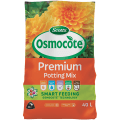A plant’s fruit or vegetable is vital to seed production and is an essential component in creating future generations.
Tomatoes, pumpkins, zucchinis, beans, peas, cucumbers, sweet corn, and eggplants are just a few of our common vegetables that are really fruits.
For edible 'fruits' to develop, the flowers of these plants need to be fertilised by the transfer of pollen from one flower to another - an action known as pollination.

No pollination = no crop
Without pollination, fertilisation doesn't occur, fruit doesn't grow, seeds don't develop and crops fail.
Bees are the best known pollinators - they collect pollen from a flower on their legs and deposit it in another as they move from bloom to bloom collecting nectar to take back to their hives.
While bees are the true ‘work horses’ of the garden they're not the only pollinators to look out for.
Butterflies & birds

Most butterflies are nectar feeders. They have a long 'proboscis' (feeding tube) which delves into flowers and through which they draw up nectar. As they feed they also gather pollen on their bodies which they will deposit in other flowers as they move around searching for food.
Attracting butterflies to the garden by planting nectar-rich flowering plants has many benefits - they look pretty and they serve to assist in food production.
Birds also work to pollinate plants.
How pollination works
Male pollen is deposited on the sticky female stigma. Each pollen grain produces a fine tendril which grows down through the style into the ovary, where fertilisation occurs.
Pollinating insects are needed to transfer pollen from the anthers to the stigma.
Many plants need 'cross pollination' to set fruit - pollen must be carried from one flower to another flower of the same type.
How fruit develops
When a flower has been pollinated and the male pollen has fertilised it, the flower itself starts to fade - it's done its job! The ovary at the base of the flower will start to swell and develop into the seed-bearing fruit.

Lack of pollination may be due to:
- Poor weather - cold, wet reduces insect populations.
- Lack of bees and other insects in your area.
Attracting pollinators
While the flowers of the crops you are growing will attract some pollinating insects, you can improve the prospects by growing a few bee and butterfly attracting plants around the edge of or close to the vegetable garden.

Plants to attract insects
- Bees - yellow, blue and white flowered plants including daisies, lavender, calendula, mint, basil.
- Butterflies - buddleia, scabiosa, echinacea.
Plant a range of brightly coloured flowering annuals as a border round the vegetable patch - marigolds, pansies, petunias, sunflowers are all insect-attracting.
Surround the vegetable garden with a permanent hedge of low growing shrubs known as good pollinator attractors - lavender, thyme, geraniums, mini and groundcover roses.








